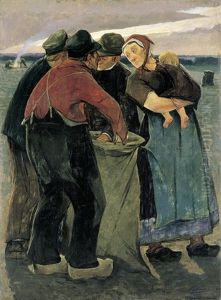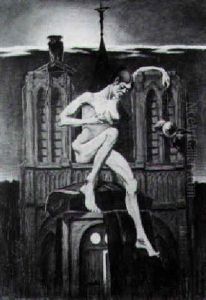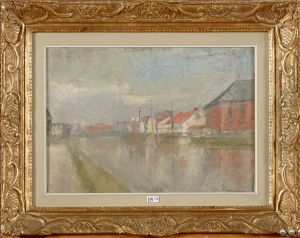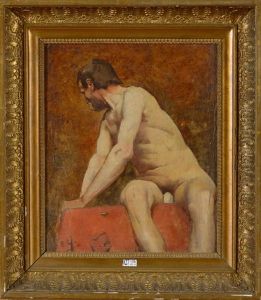Eugene Laermans Paintings
Eugène Laermans was a prominent Belgian painter born on October 11, 1864, in Brussels. Despite facing significant personal challenges, including becoming deaf and partially paralyzed at a young age, Laermans developed a passion for art that would define his career. He studied at the Academy of Fine Arts in Brussels, where he honed his skills and developed a distinctive style characterized by a somber palette and strong, expressive brushwork.
Laermans' work often depicted the lives of the working class, the poor, and the marginalized sectors of society. His empathetic approach to these subjects earned him a reputation as a social realist artist. He was particularly adept at capturing the toil and struggle of everyday life, as well as the bleak landscapes of industrializing Belgium at the turn of the century.
Throughout his career, Laermans remained an influential figure in the Belgian art scene. His paintings received critical acclaim and were exhibited widely, including at prestigious venues such as the Venice Biennale. Despite his disabilities, he maintained an active studio practice and was a member of important artistic circles, including Les XX, a group of avant-garde artists based in Brussels.
Eugène Laermans' contribution to Belgian art was recognized with several honors during his lifetime, and his work continues to be studied and admired for its emotional depth and poignant social commentary. He passed away on November 22, 1940, in Brussels, leaving behind a legacy of artwork that continues to resonate with audiences today.







































































